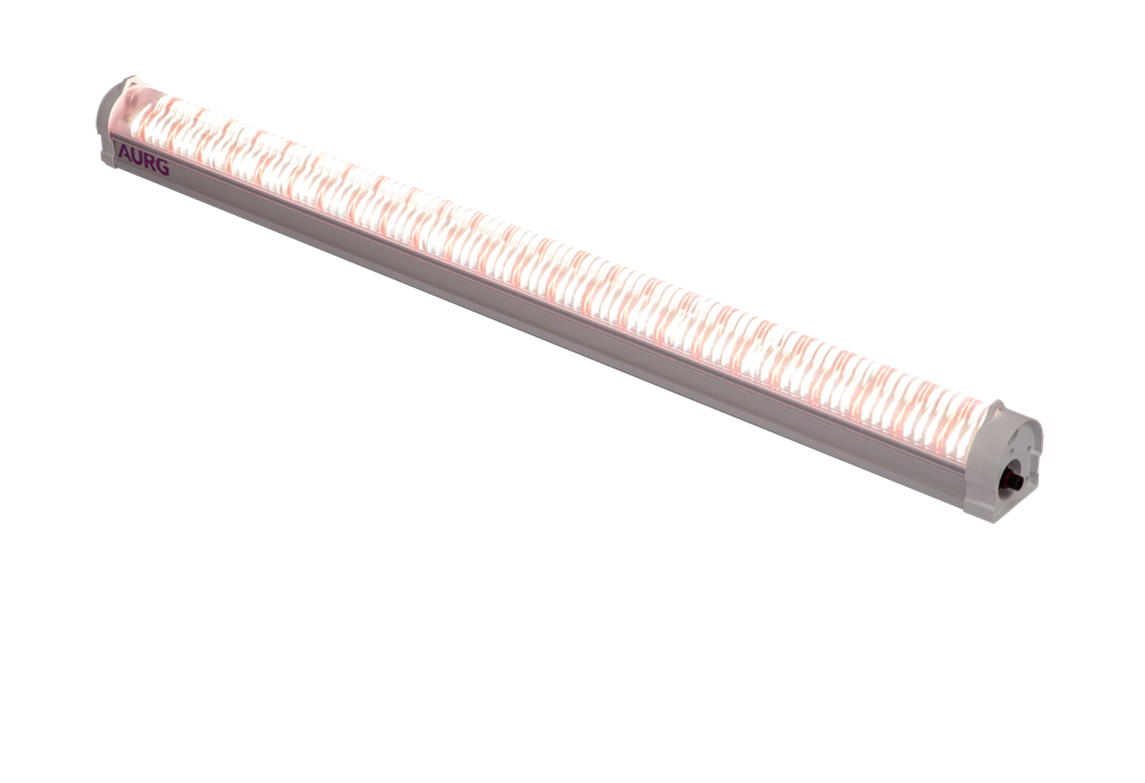Can Grow Lights Burn Plants?
Grow lights are designed to support plant development, but the same light that helps plants grow can also damage them when misused. Although LEDs and horticultural fixtures are far cooler than older high-intensity discharge lamps, plants can still experience stress, bleaching, or burn-like symptoms when exposed to excessive light intensity or heat buildup. Understanding the conditions under which grow lights can harm a plant is essential for maintaining a healthy indoor garden. Modern horticultural LEDs—such as AURG professional grow lighting—are engineered to minimize heat and maximize usable plant light, but proper distance, duration, and intensity control remain crucial for preventing light burn.
1. What “Light Burn” Really Means in Indoor Gardening
Light burn is not always caused by heat; it often results from excessive photon intensity overwhelming a plant’s natural ability to process light. When photosynthetic cells absorb more light than they can convert to chemical energy, the chlorophyll breaks down and foliage begins to pale or crisp. This condition is similar to sun scorch observed outdoors but is caused by artificial lighting indoors.
In LED systems, the risk typically arises from placing high-powered fixtures too close to the canopy or maintaining overly intense settings for long exposure periods. Unlike heat burn—where leaves dry, curl, or turn brown due to elevated temperatures—light burn often appears as yellowing between veins, bleaching at the top leaves, or slowed growth despite adequate nutrients. Recognizing these differences helps growers adjust lighting before long-term damage occurs.
Professional grow fixtures like AURG professional grow lighting are designed with optimized optical distribution, improving uniformity so plants receive balanced illumination. Even with advanced fixtures, however, growers still need to manage intensity and distance to avoid overstressing delicate foliage.
2. Conditions That May Cause Grow Light Burn
Several factors contribute to whether a grow light is likely to burn plants. Although LED grow lights emit far less radiant heat compared to metal halide or high-pressure sodium lamps, high-intensity diodes can still stress plant tissue when improperly positioned. The following conditions are the most common contributors to plant burn under artificial lighting:
Lights placed too close to the canopy
Even efficient LEDs can overwhelm plant tissue at short distances.Excessively long photoperiods
Plants need dark cycles to process energy; overstimulation can trigger stress.High-intensity settings without gradual acclimation
Young plants especially require a step-by-step increase in intensity.Poor air circulation causing heat pockets
Even low-heat LEDs produce warmth that must dissipate.Reflective surfaces amplifying light exposure
Small grow tents can unintentionally intensify light landing on the leaves.
Each of these conditions increases the risk of physiological stress. While well-designed fixtures—such as those in AURG professional grow lighting—reduce hotspots and enhance distribution, plant health still depends on proper environmental management.
3. Symptoms of Grow Light Burn and How to Identify Them
For growers, recognizing the early signs of plant burn is essential to prevent long-term damage. Light burn typically presents differently from nutrient deficiencies, making careful observation important.
Early symptoms include:
Fading or bleaching on upper leaves
Yellowing that does not follow nutrient-deficiency patterns
Reduced leaf size or slowed vertical growth
Leaves curling upward as if shielding themselves
Dry or crispy edges despite adequate watering
Unlike nutrient issues that begin on lower leaves, light burn usually appears at the top of the canopy where light exposure is strongest. In severe cases, leaf tips may brown or develop brittle texture. When these symptoms occur, lowering intensity, raising fixture height, or reducing photoperiod can help restore plant health.
LED systems from AURG professional grow lighting include optimized photon distribution and efficient thermal management to reduce these symptoms, but correct usage is still essential for maintaining healthy foliage.
4. How to Prevent Grow Lights from Burning Plants
Prevention depends on balancing light intensity with plant requirements. Each species responds differently to light strength, and seedlings, mature plants, and flowering crops all have unique tolerance levels. Implementing a structured approach reduces the risk of burn and ensures plants grow vigorously.
A practical prevention strategy includes:
Start with lower intensity and gradually increase as the plants strengthen.
Maintain recommended hanging distances based on the fixture’s output level.
Monitor canopy temperature, keeping it within the appropriate range for the crop.
Ensure proper airflow to disperse heat pockets and maintain leaf respiration.
Use dimmable fixtures when available to fine-tune photon density.
One advantage of modern LED horticultural lighting is that it offers precise control. Many AURG fixtures provide adjustable power levels or spectrum modes, allowing growers to tailor the light environment carefully. This flexibility helps avoid the extreme conditions that cause light burn while still delivering enough energy for strong plant development.
5. The Role of Fixture Design, Optics, and Heat Management
Whether grow lights burn plants often depends as much on fixture design as on user practice. High-quality LED grow lights incorporate optical lenses, reflectors, and arrangement patterns that spread light evenly across the canopy. Poorly designed fixtures concentrate too much intensity directly beneath the center, creating hotspots that accelerate leaf burn.
Thermal performance also plays a crucial role. Even though LEDs run cooler than traditional lamps, they require sophisticated heat sinks and thermal pathways to keep diode temperatures stable. If fixtures overheat, they can emit harsher light or shift spectrum output, both of which stress plants.
Products from AURG professional grow lighting feature engineered optics that improve uniformity and reduce risks associated with point-intensity exposure. Their heat-dissipating structures maintain stable diode performance, ensuring consistent light quality even during long photoperiods. Reliable fixture design is a major factor in avoiding plant burn, especially in enclosed growing environments.
6. Understanding When Grow Lights Help vs. When They Harm
Grow lights are indispensable tools for indoor cultivation, but like any agricultural tool, they require proper use to avoid unintended effects. Plants thrive when intensity, duration, and distance work together harmoniously; they experience stress when any one of these factors becomes excessive. Learning to read plant signals, adjusting fixtures thoughtfully, and selecting professional-grade lighting ensures plant development remains balanced.
High-quality LED grow lights empower growers to deliver strong, targeted illumination without unnecessary heat, making them far safer than older technologies. However, neglecting environmental management—even with advanced fixtures—can still lead to burn symptoms. That is why many growers choose purpose-built horticultural systems such as AURG professional grow lighting, which provide the correct spectral output, uniformity, and cooling performance needed for healthy indoor crops.
Summary
Grow lights can burn plants, but it is not the light source alone that causes the damage. Excessive intensity, close placement, long photoperiods, or poor airflow can overwhelm a plant’s ability to process light. Recognizing symptoms early and adjusting distance, dimming, or duration helps protect plant health. High-quality LED fixtures—like those found in AURG professional grow lighting—are engineered to minimize burn risk by offering uniform light distribution and efficient thermal control. When used correctly, grow lights remain one of the most effective tools for healthy and productive indoor cultivation.
Previous:




